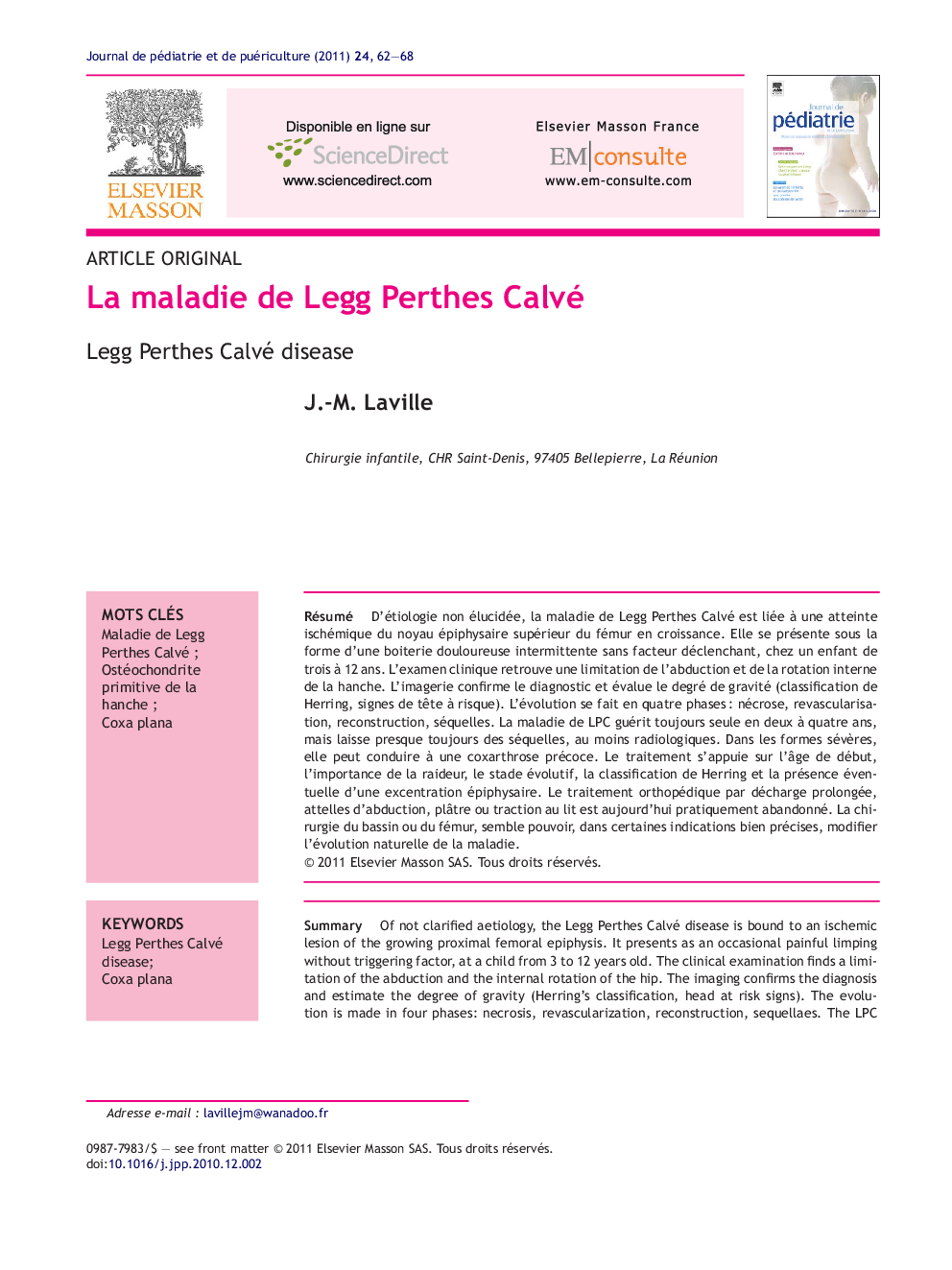| Article ID | Journal | Published Year | Pages | File Type |
|---|---|---|---|---|
| 4170020 | Journal de Pédiatrie et de Puériculture | 2011 | 7 Pages |
RésuméD’étiologie non élucidée, la maladie de Legg Perthes Calvé est liée à une atteinte ischémique du noyau épiphysaire supérieur du fémur en croissance. Elle se présente sous la forme d’une boiterie douloureuse intermittente sans facteur déclenchant, chez un enfant de trois à 12 ans. L’examen clinique retrouve une limitation de l’abduction et de la rotation interne de la hanche. L’imagerie confirme le diagnostic et évalue le degré de gravité (classification de Herring, signes de tête à risque). L’évolution se fait en quatre phases : nécrose, revascularisation, reconstruction, séquelles. La maladie de LPC guérit toujours seule en deux à quatre ans, mais laisse presque toujours des séquelles, au moins radiologiques. Dans les formes sévères, elle peut conduire à une coxarthrose précoce. Le traitement s’appuie sur l’âge de début, l’importance de la raideur, le stade évolutif, la classification de Herring et la présence éventuelle d’une excentration épiphysaire. Le traitement orthopédique par décharge prolongée, attelles d’abduction, plâtre ou traction au lit est aujourd’hui pratiquement abandonné. La chirurgie du bassin ou du fémur, semble pouvoir, dans certaines indications bien précises, modifier l’évolution naturelle de la maladie.
SummaryOf not clarified aetiology, the Legg Perthes Calvé disease is bound to an ischemic lesion of the growing proximal femoral epiphysis. It presents as an occasional painful limping without triggering factor, at a child from 3 to 12 years old. The clinical examination finds a limitation of the abduction and the internal rotation of the hip. The imaging confirms the diagnosis and estimate the degree of gravity (Herring's classification, head at risk signs). The evolution is made in four phases: necrosis, revascularization, reconstruction, sequellaes. The LPC disease heals always spontaneously in two–four years, but leaves almost always sequellaes, at least radiological. In the severe forms, she can lead to a premature coxarthrosis. The treatment leans on the age of the beginning, the importance of the steepness, the evolutionary stage, the classification of Herring and the possible presence of an epiphyseal excentration. The orthopaedic treatment by long-term non-weight bearing, abduction splints, plasters or bed traction is practically abandoned today. The pelvic or femoral surgery, seems to be able to, in very precise indications, modify the natural evolution of the disease.
